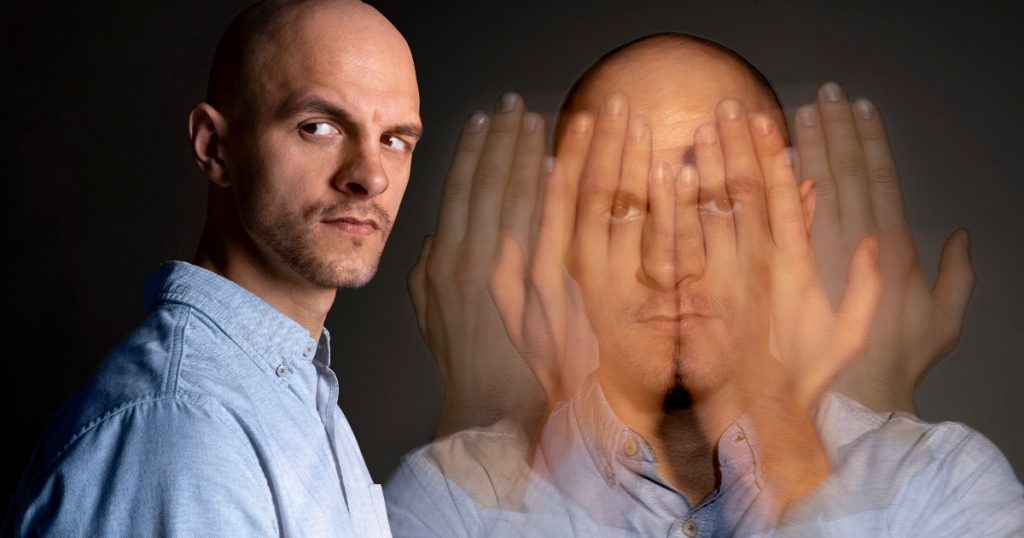Schizophrenia is a mental health condition that affects how a person thinks, feels, and acts. It can lead to symptoms like hallucinations, confused thoughts, and a lack of emotional expression. Around one in 300 people worldwide live with schizophrenia, and its symptoms can make daily life very challenging.
Years ago, doctors divided schizophrenia into subtypes to better understand the condition. One of these was called “undifferentiated schizophrenia.” While this term is no longer used today, understanding it can help us learn more about the many ways schizophrenia can affect someone.
What is Undifferentiated Schizophrenia?
Undifferentiated schizophrenia was a term used for people who clearly had schizophrenia but didn’t fit into one specific subtype. Schizophrenia used to be divided into five types:
- The paranoid type of schizophrenia focuses on hallucinations and delusions, often centered around fear or persecution.
- The disorganized type of schizophrenia is marked by erratic thoughts and unpredictable behaviors, along with disorganized speech.
- The catatonic type of schizophrenia is linked to unusual movement patterns, ranging from immobility to excessive activity.
- The residual type of schizophrenia involves milder, lingering symptoms after the major signs of the disorder have subsided.
- The undifferentiated type of schizophrenia includes a combination of symptoms from multiple subtypes without fitting clearly into a specific one.
For example, if someone had disorganized speech (common in the disorganized type) and hallucinations (common in the paranoid type), but neither symptom was dominant, they might have been diagnosed with undifferentiated schizophrenia. It acted as a “catch-all” category for cases that didn’t fall neatly into the other four types.
Today, experts no longer use these subcategories. Schizophrenia is now seen as a spectrum, meaning the symptoms and their severity vary greatly from person to person.
Common Symptoms of Undifferentiated Schizophrenia
The symptoms of undifferentiated schizophrenia were a mix of several types. These often included:
- Hallucinations, like hearing voices or seeing things that aren’t real.
- Delusions, such as believing something untrue but holding onto it strongly.
- Disorganized thinking or speech, making it hard to talk or follow a conversation.
- Reduced motivation or energy to do daily activities.
- Lack of facial expression or emotions (also called a “flat affect”).
- Movements that seem strange or rigid, or a lack of movement altogether (catatonia).
- Social withdrawal and trouble interacting with others.
People with these symptoms had significant struggles, often affecting work, relationships, and self-care. To be diagnosed, symptoms needed to last for at least six months and have a big impact on everyday life.
What Causes Schizophrenia?
Schizophrenia, including the undifferentiated type, doesn’t have one single cause. Instead, its development seems to be influenced by a mix of factors, such as:
Genetics
If close relatives, like a parent or sibling, have schizophrenia, the chances of developing it increase. While having a family history doesn’t guarantee it, the link is strong.
Environment
Stressful experiences, like neglect or trauma, may trigger symptoms in someone already at risk. Other factors, such as exposure to infections or malnutrition before birth, can also play a part.
Brain Changes
Imbalances in brain chemicals like dopamine and serotonin are linked to schizophrenia. Some people with the condition may also have structural differences in their brain.
Substance Use
Using drugs like cannabis or LSD, especially at a young age, can increase the chances of schizophrenia for people who are already vulnerable.
These risk factors don’t guarantee someone will develop schizophrenia, but they can play a big role in how it starts.
Schizophrenia Diagnosis and Classification Today
The approach to diagnosing schizophrenia has changed. Terms like undifferentiated schizophrenia are no longer used because they don’t always help in understanding or treating the condition. Doctors now use a broader definition that considers symptoms as part of a spectrum.
To be diagnosed with schizophrenia today, a person must show at least two major symptoms, such as hallucinations, delusions, or disorganized speech, for at least one month. The symptoms must also make daily life significantly harder and last for at least six months.
Tools like brain scans or blood tests may be used to rule out other health conditions, but there is no single test for diagnosing schizophrenia. Instead, doctors rely on observing behavior and listening to a person’s experiences.
Modern Treatment Approaches for Schizophrenia
Treatment today focuses on managing symptoms so people can lead fuller, healthier lives. Since schizophrenia’s symptoms vary widely, treatment is personalized for each individual. Common approaches include:
Medication
Antipsychotic drugs are the most commonly prescribed treatment. They help reduce hallucinations and other symptoms. Some people may also need mood stabilizers or antidepressants to manage related issues.
Therapy
Counseling, especially cognitive-behavioral therapy (CBT), helps people manage their symptoms. Therapy can teach coping strategies and improve communication and problem-solving skills.
Support Programs
Programs like family education, social skills training, and supported employment can make navigating daily life easier for someone with schizophrenia. Early intervention programs are especially helpful for those newly diagnosed.
The Legacy of Undifferentiated Schizophrenia
The term “undifferentiated schizophrenia” may no longer be officially used, but it reminds us of the challenges in understanding mental health. Schizophrenia presents differently in everyone, and this older classification highlighted the complexity of symptoms and the need for more individualized approaches.
Today, by focusing on schizophrenia as a spectrum, doctors and researchers can provide treatments tailored to each person’s specific needs. This shift in understanding has paved the way for better care, aiming to help individuals manage symptoms and improve their quality of life.
If you or someone you know is struggling with symptoms like hallucinations, disorganized thoughts, or emotional withdrawal, reaching out to a mental health professional is crucial. Early diagnosis and treatment can make a huge impact, helping to reduce symptoms and offer a path toward stability and a more fulfilling future.
